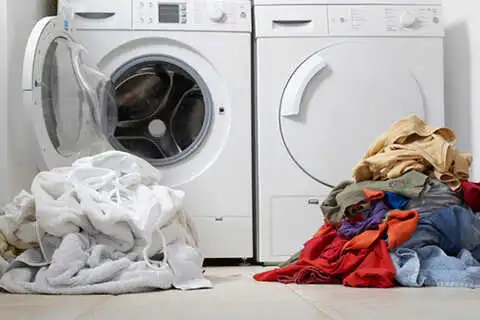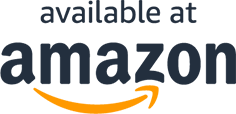Laundry and Dry-Cleaning Machinery

Laundry and Dry-Cleaning Machinery Standards address safety precautions associated with laundry and dry-cleaning machines of all sizes used in industrial as well as commercial settings. First identifying the most significant hazards associated with laundry and dry-cleaning machinery, these standards then offer guidance for safety-oriented design. Through the specification of proper usage and maintenance practices, the proper application of Laundry and Dry-Cleaning Machinery Standards helps in minimizing health and safety risks.
ISO 8230-1:2008
Safety requirements for dry-cleaning machines - Part 1: Common safety requirements
ISO 8230-1:2008 specifies common safety requirements for dry-cleaning machines. It is applicable to dry-cleaning machines of all sizes intended for industrial and commercial use for the cleaning of articles made of textile, leather, furs and skins, using exclusively either perchloroethylene or combustible solvent as the cleaning medium. It is not applicable to: machines placed at the disposal of the general public (self-service); barrier machines; transfer machines; ironing presses (see ISO 10472-1 and ISO 10472-6); ancillary equipment, e.g. room ventilation equipment, waste recuperation systems of the still, external water cooling systems or external systems for solvent recovery from the still sludge. ISO 8230-1:2008 deals with all significant hazards arising from the use of the dry cleaning machine, where use of the dry cleaning machine comprises both intended use and foreseeable abnormal situations and includes commissioning, use and maintenance. It defines the common safety requirements for dry cleaning machines and is intended to be used in conjunction with ISO 8230 2 and ISO 8230 3, as relevant. Specific requirements in ISO 8230 2 and ISO 8230 3 take precedence over the respective requirements of ISO 8230-1. ISO 8230-1:2008 does not deal with hazards caused by processing items that can create an explosive atmosphere (e.g. printers' wipers containing a low-flash solvent), nor with machines processing loads that can contain foreign solvents , which could lead to a change in a property (characteristic) of the cleaning solvent, e.g. cause foaming or make it carcinogenic.
ISO 8230-2:2008
Safety requirements for dry-cleaning machines - Part 2: Machines using perchloroethylene
ISO 8230-2:2008 specifies safety requirements for dry-cleaning machines that exclusively use perchloroethylene (or perc ) as their cleaning medium. It is applicable to such dry-cleaning machines, within the scope of ISO 8230-1, when they are used as intended and under conditions of misuse that are reasonably foreseeable by the manufacturer. ISO 8230-2:2008, in conjunction with ISO 8230-1, deals with all significant hazards, significant hazardous situations and significant hazardous events that have been identified as being significant to the types of machines covered by ISO 8230-2:2008 and which require specific action by the designer or manufacturer to eliminate or reduce the risk. It deals with the following significant hazards specific to the use of perc, which can lead to the inhalation of unhealthy vapours, to perc contact with the skin (including of the feet) or eyes of the machine operator and those of other personnel and members of the public, as well as to water and ground contamination: perc emission to the workroom, seepage into the ground and sewer during operation and maintenance of the water separator; perc emission resulting from operation, cleaning and maintenance of the distilling installation.
ISO 8230-3:2008
Safety requirements for dry-cleaning machines - Part 3: Machines using combustible solvents
ISO 8230-3:2008 specifies safety requirements for dry-cleaning machines that use a combustible solvent (CS) as their cleaning medium. It is applicable to such dry-cleaning machines, within the scope of ISO 8230-1, when they are used as intended and under conditions of misuse that are reasonably foreseeable by the manufacturer. ISO 8230-3:2008, in conjunction with ISO 8230-1, deals with all significant hazards, significant hazardous situations and significant hazardous events that have been identified as being significant to the types of machines covered by this part of ISO 8230 and which require specific action by the designer or manufacturer to eliminate or reduce the risk. It deals with the following significant hazards specific to the use of CS: hazards related to the entire dry-cleaning machine (electrical hazards, explosion hazards); hazards relating to the machine and tumblers (combustible solvent emission, explosion hazards during the cleaning phase, explosion hazards during the drying phase); hazards relating to the distilling equipment (combustible solvent emission, explosion hazards).
ISO 10472-1:1997
Safety requirements for industrial laundry machinery -- Part 1: Common requirements
The individual parts of ISO 10472 identify all significant hazards associated with laundry machinery designed for use in industrial laundry premises, which includes hotels, hospitals, nursing homes, prisons and similar premises, as well as machines designed for use in self-service establishments subject to the minimum capacities stated in the separate parts of ISO 10472. Dry-cleaning presses and garment presses are also included. Certain specialized finishing machines used for shaped items are excluded. Household and similar electrical appliances (see IEC 335) are not covered by ISO 10472. The individual parts of ISO 10472 complement the basic requirements laid down in ISO/TR 12100-1 and ISO/TR 12100-2. They give guidance to the designer on assessing the risks associated with the hazards (see EN 1050) and on selecting measures to attain the required safety level. "Use of machinery" comprises both intended use and reasonably foreseeable misuse. The individual parts of ISO 10472 do not give specific technical advice about: the phases of life of the machine other than use; noise; laser; maintenance operations and elimination of process faults; ergonomics; explosions; isolation of energy sources; pressure vessels; hot surfaces necessarily exposed for production purposes [but see ISO 10472-6 (press head surface)]. The individual parts of ISO 10472 do not cover electromagnetic compatibility. Hazards due to the use of gas within a machine which is not included in the range described in 5.5.2 of this part of ISO 10472 are not covered by the individual parts of ISO 10472. Examples of layouts of a large- and a medium-size plant which show the machines of parts 2 to 6 of ISO 10472 are given in annex B. The individual parts of ISO 10472 apply to machines which are manufactured after the date of issue of the relevant parts. The guidance contained in the individual parts of ISO 10472 is based on the assumption that the designer has completed a risk analysis of the machine under consideration. This will enable him to identify and fulfil the significant requirements for the machine as stipulated by the individual parts of ISO 10472.

ISO 10472-2:1997
Safety requirements for industrial laundry machinery -- Part 2: Washing machines and washer-extractors
This part of ISO 10472 covers, together with ISO 10472-1, most significant hazards associated with washing machines and washer-extractors of all configurations having a net usable cage volume 60 l. This part of ISO 10472 does not cover particular hazards for drawer-type washer-extractors. This part of ISO 10472 does not cover the hazards caused by processing work which may create an explosive or flammable atmosphere inside the machine. This part of ISO 10472 complements the basic requirements as laid down in ISO/TR 12100-1 and ISO/TR 12100-2. It also gives guidance to the designer on assessing the risks associated with the hazards (see EN 1050) and on selecting measures for attaining the required safety level. This part of ISO 10472 does not apply to ancillary equipment, e.g. chemical supply pumps, steam valves and supply pipe work, vent systems, work feed systems and discharge systems and ducting to the atmosphere.

ISO 10472-3:1997
Safety requirements for industrial laundry machinery -- Part 3: Washing tunnel lines including component machines
This part of ISO 10472 covers, together with ISO 10472-1, most significant hazards associated with washing tunnel lines including component machines such as: continuous tunnel washing machines; squeeze presses or centrifugal extraction machines; transfer conveyor systems; automatic transfer tumblers; loading or unloading system interfaces; access platform and ladders. This part of ISO 10472 does not cover particular hazards for continuous stand-alone washing lines for endless towels. This part of ISO 10472 does not cover the hazards caused by processing work which may create an explosive or flammable atmosphere inside the machine. This part of ISO 10472 complements the basic requirements laid down in ISO/TR 12100-1 and ISO/TR 12100-2. It also gives guidance to the designer on assessing the risks associated with the hazards (see EN 1050) and on selecting measures for attaining the required safety level. This part of ISO 10472 does not apply to ancillary equipment, e. g. chemical store and supply pumps, steam valves and supply pipework, vent systems, work feed systems and discharge systems and ducting to the atmosphere.

ISO 10472-4:1997
Safety requirements for industrial laundry machinery -- Part 4: Air dryers
This part of ISO 10472 covers, together with ISO 10472-1, most significant hazards associated with air dryers, and in particular with tumble dryers having a net usable cage volume 160 l and tunnel finishers including associated conveyors and cabinet dryers. This part of ISO 10472 complements the basic requirements as laid down in ISO/TR 12100-1 and ISO/TR 12100-2. It also gives guidance to the designer on assessing the risks associated with the hazards (see EN 1050) and on selecting measures for attaining the required safety level. This part of ISO 10472 does not apply to ancillary equipment.

ISO 10472-5:1997
Safety requirements for industrial laundry machinery -- Part 5: Flatwork ironers, feeders and folders
This part of ISO 10472 covers, together with ISO 10472-1, most significant hazards associated with flatwork ironers, feeders and folders, such as: cylinder and bed ironers for flatwork finishing having a contact area (for bed ironers under pressure) 0,25 m 2 ; flatwork feeding machines for the automatic feeding of flatwork into bed or cylinder ironers, or directly to folders; flatwork folding machines for the automatic folding of flatwork in association with cylinder and bed ironers; folding machines for the automatic folding of small pieces (excluding endless towels); multi-function machines. This part of ISO 10472 complements the basic requirements as laid down in ISO/TR 12100-1 and ISO/TR 12100-2. It also gives guidance to the designer on assessing the risks associated with the hazards (see EN 1050) and on selecting measures for attaining the required safety level. This part of ISO 10472 does not apply to ancillary equipment, e. g chemical supply pumps, steam valves and supply pipe work, vent systems, work feed systems and discharge systems and ducting to the atmosphere.

ISO 10472-6:1997
Safety requirements for industrial laundry machinery -- Part 6: Ironing and fusing presses
This part of ISO 10472 covers, together with ISO 10472-1, most significant hazards associated with ironing and fusing presses used in the laundry, garment and dry-cleaning industry, and in particular: scissor presses; cabinet presses; drawer presses; rotary presses (carousel) and other presses with multiple bucks. This part of ISO 10472 complements the basic requirements as laid down in ISO/TR 12100-1 and ISO/TR 12100-2. It also gives guidance to the designer on assessing the risks associated with the hazards (see EN 1050) and on selecting measures for attaining the required safety level. This part of ISO 10472 does not apply to ancillary equipment, e. g steam boilers, steam valves and supply pipe work, vent systems, work feed systems and discharge systems, and ducting to the atmosphere.

